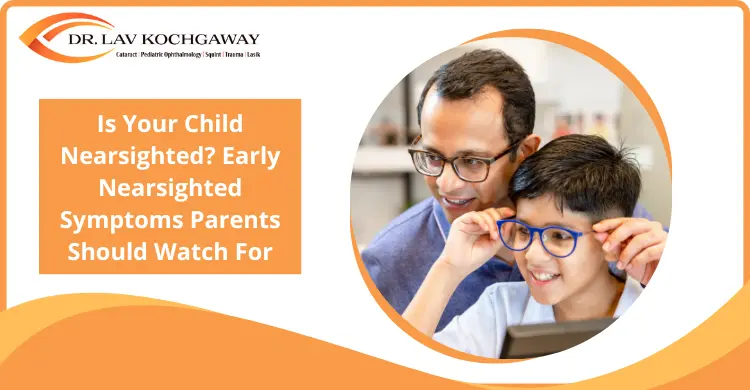
Is your child struggling to see clearly in the distance? As a parent, ensuring your child’s vision health is essential. Clear eyesight not only impacts their academic performance but also influences their confidence, physical coordination, and social interactions. Early detection of vision problems, especially nearsightedness, is vital. But first, it’s important to understand nearsightedness symptoms and why it should be a concern for parents.
Nearsightedness, also known as myopia, is a common vision condition where close objects appear clear, but distant objects look blurry. It typically develops during childhood and, if left untreated, can worsen over time.
Myopia occurs when the eye is slightly elongated or the cornea is too curved, causing light to focus in front of the retina instead of directly on it. Without proper correction, children may struggle in school, have trouble recognizing people from a distance, or face challenges in activities that require clear distance vision, such as sports.
Many parents ask, “What is the difference between farsighted and nearsighted?” Simply put, nearsightedness causes distant objects to appear blurry, while farsightedness (also called hyperopia) is the opposite. With farsightedness, close objects appear unclear, but distant ones are typically easier to see.
For example:
Understanding these differences helps parents describe their child’s vision challenges more accurately when speaking with an eye care professional.
Catching nearsighted symptoms early makes a huge difference. Watch for these common indicators:
Routine eye exams remain the most reliable method to diagnose vision issues like nearsightedness. Children may not always recognize or communicate their vision struggles, so scheduling regular screenings is essential.
If diagnosed with myopia, your child has several effective options:
A Pediatric Eye Specialist can help you explore the most suitable combination of these options based on their age, prescription, and daily needs.
Protecting your child’s vision involves simple, practical steps:
Experts recommend that children have their first comprehensive eye exam at around age 3. This is considered the ideal time to begin monitoring visual development and identifying any early signs of potential issues.
Early eye exams are essential because many vision problems can develop without obvious symptoms. Detecting issues such as poor visual acuity, eye alignment problems, or focusing difficulties at this age can help prevent long-term complications. Identifying and addressing these concerns early on supports better learning, social development, and overall wellness as your child grows.
Identifying nearsighted symptoms early can significantly impact your child’s academic performance, daily comfort, and overall quality of life. By staying proactive and attentive to signs of vision issues, you play a vital role in protecting your child’s long-term eye health.
If your child has shown any of the symptoms mentioned, or it’s been more than a year since their last eye exam, schedule a consultation with Dr. Lav Kochgaway today. Early action makes all the difference.